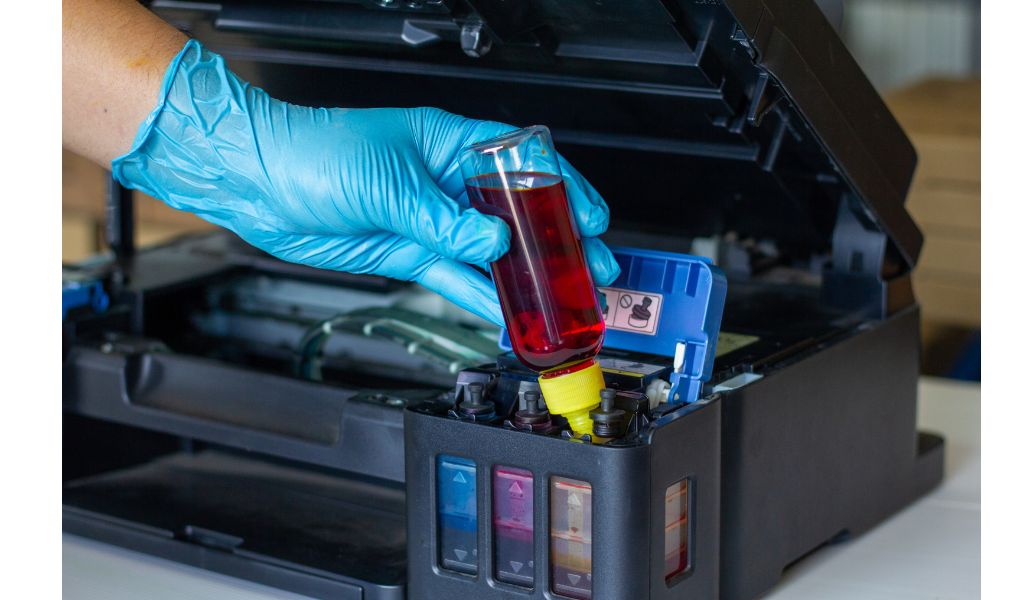Introduction:
At GetPrinter.Ink, we understand the importance of getting your printer up and running smoothly, which is
why we've put together this troubleshooting guide to help you address the issue of a cartridge not
working after refilling.
Cartridge errors can manifest in various forms, including messages indicating low ink levels,
incompatible cartridges, or issues with cartridge alignment. These errors may appear on your printer's
display panel or through pop-up notifications on your computer screen. While these messages might seem
daunting at first, understanding their root causes can simplify the troubleshooting process.
Understanding the Problem: Why Did Your Cartridge Stop Working?
Before diving into solutions, it's essential to understand why your cartridge might have stopped working
after a refill. Several factors could contribute to this issue:
- Improper Refilling Technique: Refilling ink cartridges requires precision and care.
If not done correctly, air bubbles might get trapped, or the cartridge's electronic components might
get damaged, leading to malfunction.
- Quality of Ink: The quality of ink used for refilling plays a crucial role in the
performance of your cartridge. Substandard ink or incompatible ink formulations can clog printheads
or damage internal components.
- Wear and Tear: Over time, cartridges undergo wear and tear, affecting their ability
to function optimally. Refilling an old or damaged cartridge might not yield satisfactory results.
- Printer Compatibility: Some printers are designed to reject refilled cartridges or
may display error messages when non-genuine cartridges are detected.
Troubleshooting Steps: Getting Your Cartridge Back on Track
- Check for Air Bubbles: Air bubbles trapped inside the cartridge can obstruct ink flow, resulting in printing issues. To eliminate air bubbles, gently tap the cartridge on a flat surface or use a priming tool provided with some refill kits.
- Clean the Printhead: Clogged printheads can impede ink flow and cause print quality problems. Most printers have a printhead cleaning utility accessible through the printer's software interface. Run a printhead cleaning cycle to remove dried ink or debris.
- Use High-Quality Ink: Invest in reputable ink brands known for their compatibility with your printer model. While cheaper alternatives might seem appealing, they can compromise print quality and potentially damage your cartridge.
- Inspect for Damage: Examine the cartridge for any visible damage, such as cracks or leaks. If the cartridge appears damaged, replacing it might be the most effective solution.
- Reset the Cartridge: Some printers require cartridge reset procedures after refilling to clear error messages or reset ink level indicators. Refer to your printer's manual or manufacturer's website for instructions on resetting cartridges.
- Update Printer Firmware: Occasionally, printer manufacturers release firmware updates to address compatibility issues or improve performance. Check for firmware updates for your printer model and install them if available.
- Verify Printer Compatibility: Ensure that your printer is compatible with refilled cartridges. Some printers are designed to only work with genuine cartridges or may require specific aftermarket cartridges for refilling.
Final Thoughts:
While refilling ink cartridges offers potential cost savings, it's essential to proceed with caution and
adhere to best practices to avoid encountering issues like cartridge malfunction. By following the
troubleshooting steps outlined in this guide and exercising care during the refilling process, you can
maximize the lifespan of your cartridges and maintain optimal print quality. If problems persist despite
your efforts, consider seeking assistance from a professional printer technician or contacting the
cartridge manufacturer for further support. With the right approach, you can overcome cartridge-related
challenges and enjoy hassle-free printing experiences.









